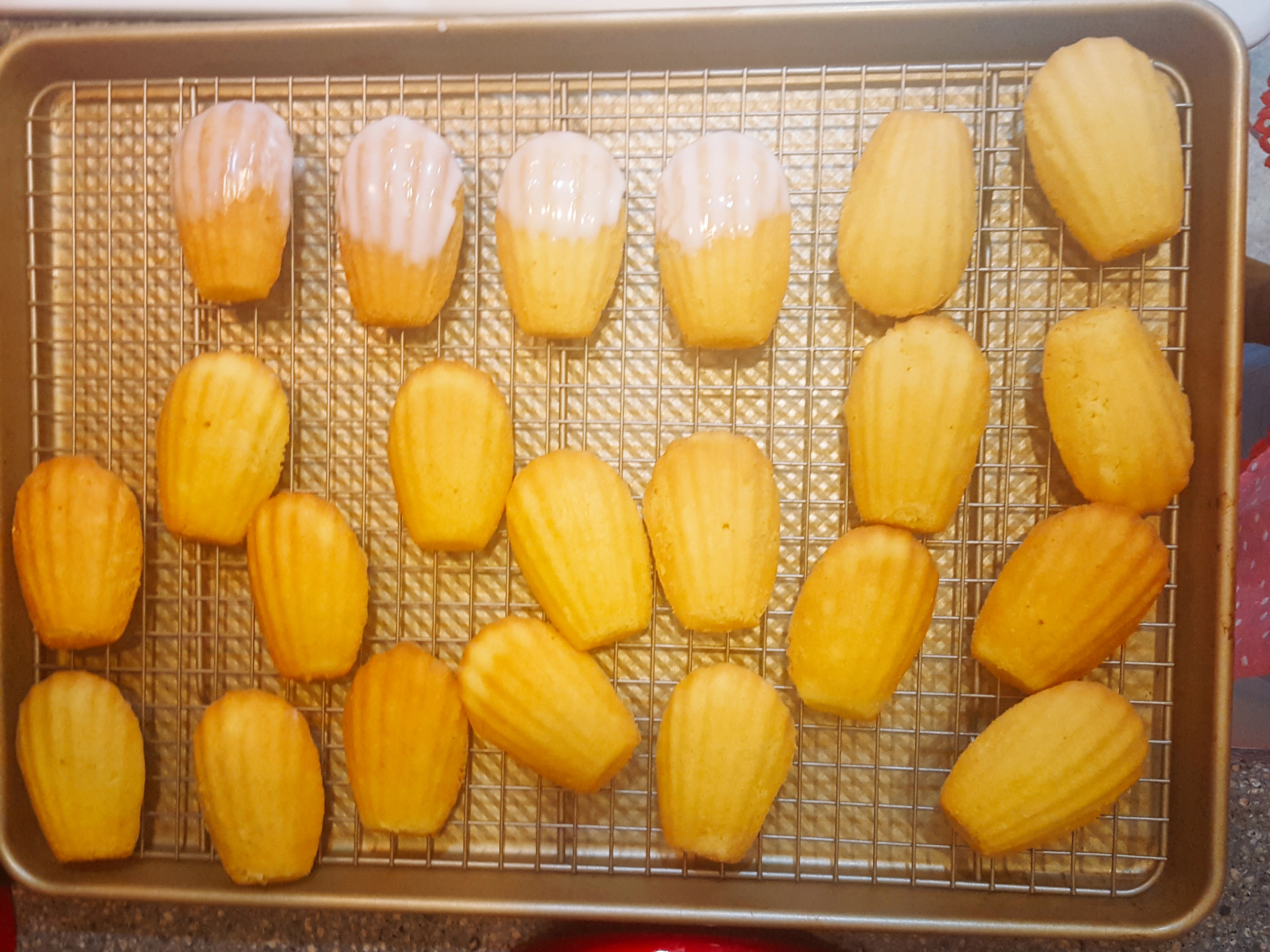
Lemon Lavender Madeleines

I really enjoy baking with citrus in the winter. In general, I try to bake and cook with ingredients while they are in season: berries in the summer, apples in fall, etc. So my interest in oranges and lemons in the winter months is partially because most citrus is in season at this time.
But there is also something really cheering about baking something bright and citrusy when the days are dark, cold and short. It feels like adding a little homemade sunshine into my life. Who doesn’t love that?

So when I decided I wanted to make madeleines, small french tea cakes, I knew my classic vanilla recipe wouldn’t do. I needed a punch of citrus in there somewhere. I had some lemons on hand and a bunch of dried lavender in the spice cabinet, and so the idea for this recipe was born.
If you’ve never tried this flavor combination, it might sound weird, but its amazing. Lavender and lemon go together like peanut butter and jelly, or hot dogs and mustard. Done right, lavender balances the acidity of the lemon with a soft floral note. But take note: too much lavender and you’ll make something that tastes of soap. A little goes a long way.
Culinary lavender is easy to find at spice shops. I got mine from Penzeys Spices, which is a great store for people who love baking and cooking.

This basic recipe came from the mother of a childhood friend of mine, Mrs. Denis. Her family was originally from Quebec and they introduced us to madeleines. She gave my family the recipe many years ago, before madeleines experienced their recent surge in popularity.
I don’t believe having a pronounced “hump” on the back of the cakes was considered such a big deal then, and as such Mrs.Denis did not call for any baking powder. I’ve added a very small amount, which helps a very gentle hump form. If you hoping for a large hump, you could increase that amount by double or more.
Lemon Lavender Madeleines
Makes 24 cakes
- ½ cup (1 stick) unsalted butter (plus more for pans)
- 1 cup all-purpose flour (plus more for pans)
- 1/4 tsp baking powder
- 4 eggs
- 1/4 tsp salt
- 2/3 cup sugar
- 1 tsp vanilla extract
- 1/4 tsp lemon extract
- zest of 1 lemon
- 1/4 cup of lemon juice (from 1-2 lemons)
- 2 tsp dried culinary lavender
- 1 to 1 1/2 cups powdered sugar
Prepare two madeleine pans by brushing the molds with softened butter and then coating lightly with flour. Put the pans in the fridge to chill.
Melt one stick of butter (I use the microwave) and set aside to let cool. Sift the flour and baking soda together in a small bowl and set aside.
In the bowl of an electric mixer fitted with the whisk attachment, beat the eggs, salt and sugar at high speed until thick and slightly lighter in color, about 8 minutes. Add the extracts and zest and mix to combine.
Remove bowl from the mixer and fold in the flour mixture by hand, rapidly but gently, until the flour just disappears into the batter. Fold in the butter gently, making sure it doesn’t settle to the bottom. Cover the bowl with plastic wrap and chill in the fridge for 30 minutes (or up to overnight).
Preheat oven to 375. Using a small scoop or spoon, distribute the batter into the two prepared pans. Bake for 10-12 minutes or until the cakes are golden brown, with darker browning around the edges, and the tops spring back when touched.
Remove from the oven and let cool for one minute, then release the cakes onto a cooling rack. They can usually be freed by rapping the pan against the counter and tipping it over onto the cooling rack. Loosen any stubborn ones using a offset spatula or a fork. Allow to cool on the rack for 10 minutes.
Meanwhile, make the glaze. Bring the lemon juice and lavender to a simmer in a small sauce pan. Take off the heat and let steep for 5 minutes. Strain over a small bowl to remove the lavender. Whisk in 1 cup of the powdered sugar, adding more as needed to achieve a thick but fluid consistency.
One by one, dip the madeleines in the glaze and place them on a cooling rack set inside a sheet pan to catch the drips. Let the glaze set before severing.
Madeleines are best eaten the day they are made, but they can be stored in an airtight container for a few days. You can also freeze them by wrapping each one in plastic wrap and then placing them in a freezer bag.



2 Comments
Karen lange
A yummy indulgence on a dreary day!
givememeatloaf
What a lovely recipe! 😀